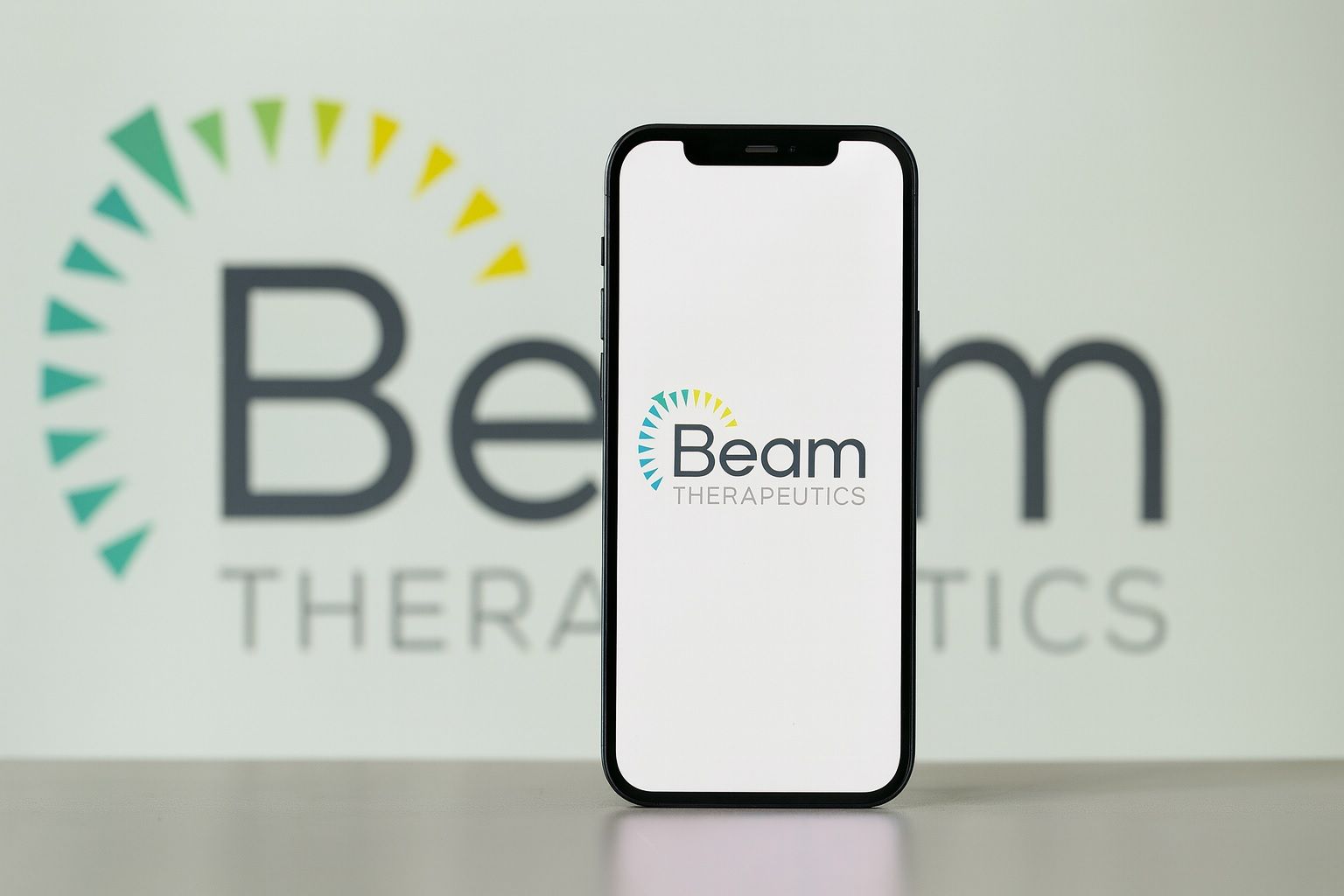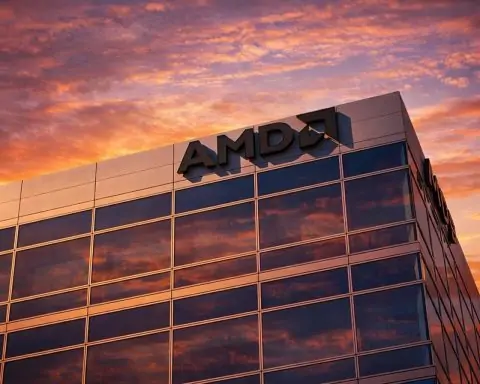Ticker: Beam Therapeutics (NASDAQ: BEAM) [1]. – Price (Oct 21, 2025): ~$30 per share (about +17% recently) [2]. – Sector: Biotechnology (precision gene editing) [3]. – Recent News: FDA granted Regenerative Medicine Advanced Therapy (RMAT) and Orphan Drug designations to Beam’s lead programs (BEAM-101 for sickle cell disease and BEAM-302 for alpha-1 antitrypsin deficiency) [4] [5]. Early trial data for these programs have been promising. – Analyst Outlook: Consensus is “Moderate Buy” with average 1-year target ~$45–46 [6] [7], implying roughly 70–80% upside.
Beam’s stock jumped sharply after the FDA awarded priority designations to its gene-editing therapies. On Oct 20, BEAM closed near $30 (up ~17%) [8]. Traders attributed the rally to regulatory milestones: in August 2025 the FDA granted RMAT status to BEAM-101 (Beam’s base-edited cell therapy for severe sickle cell disease) [9], and in May 2025 it granted RMAT to BEAM-302 (an in vivo base editor for alpha-1 antitrypsin deficiency) [10]. These follow already-announced FDA orphan drug designations for both programs [11] [12]. Industry analysts note that RMAT and orphan status not only validate Beam’s science but also enable closer FDA collaboration and expedited review. For example, Beam’s president Giuseppe Ciaramella said the BEAM-101 RMAT “reinforc[es] its potential as a one-time, best-in-class therapy” for sickle cell [13]. Market commentary emphasizes the bullish outlook: as one report noted, Wall Street’s average price target (~$45) implies ~70% upside from current levels [14] [15].
Beam’s pipeline has delivered encouraging proof-of-concept data. In its AATD trial, a single 60 mg dose of BEAM-302 raised functional alpha-1 antitrypsin (AAT) to ~12.4 μM (above the protective threshold) and reduced the mutant Z-AAT protein by ~78% [16]. Jefferies analysts noted that BEAM-302’s “safety looks clean” at the doses tested [17]. Reflecting this success, the FDA granted BEAM-302 Orphan Drug status (after RMAT) [18], and Beam has already moved to higher dose cohorts and plans a Part B trial in patients with liver disease [19]. Similarly, Beam’s sickle-cell program BEAM-101 (a base-edited hematopoietic stem cell transplant) has shown robust results: updated data from the BEACON Phase 1/2 trial (30 patients dosed) revealed large, durable increases in fetal hemoglobin and no vaso-occlusive crises post-transplant [20]. BEAM-101 received Orphan status in June and RMAT in August 2025 [21] [22]. These early wins — the first-ever reported clinical gene correction via base editing [23] — underpin the recent optimism.
Analyst Sentiment and Outlook
Analysts remain largely bullish on BEAM. MarketBeat reports a “Moderate Buy” consensus with a $45.92 average 12-month target [24]. Zacks Investment Research notes the mean target ~$45.4, implying ~76% upside from recent prices [25]. Recently Jefferies initiated coverage with a Buy rating and $41 target, and H.C. Wainwright reiterated a Buy with an $80 target, citing “steady progress” in the pipeline [26]. (By contrast, Barclays trimmed its target to $21 on valuation concerns [27].) Overall, about three-quarters of analysts rate BEAM a buy/strong-buy [28] [29]. Beam also carries a Zacks Rank of #2 (Buy) due to recent positive earnings revisions [30]. In short, the street is upbeat: most price targets are well above current levels [31] [32].
Sector and Competitive Trends
Beam’s rally comes amid a broader gene-editing boom. Peers like Intellia Therapeutics (NTLA) and CRISPR Therapeutics (CRSP) have surged on breakthroughs – Intellia’s ATTR amyloidosis CRISPR therapy showed a 92% disease protein reduction [33], and CRISPR’s Casgevy (sickle cell gene therapy) became the first approved CRISPR drug [34] – pushing their stocks ~+70–80% year-to-date. Beam’s base-editing approach is in the same vein. Recent M&A underscored big-pharma interest: Eli Lilly agreed to buy Verve Therapeutics (another base-editing biotech) for up to $1.3 billion [35], highlighting the value of Beam’s underlying technology. Still, BEAM’s ~22% YTD gain trails the ~76% YTD for CRISPR Therapeutics and ~81% for Intellia [36], suggesting some room to run if Beam delivers on its promises.
Financials and Catalysts
Beam is pre-revenue, but its balance sheet is strong. In Q2 2025 the company reported a $1.00 loss per share (slightly beating expectations) on $8.5M in R&D-funding revenue [37]. Importantly, it ended Q2 with ~$1.2 billion in cash [38] – enough to fund operations into 2028 even before recent financing. Indeed, Beam has since announced a stock offering to raise about $500M, which analysts say should extend cash runway into 2028 [39]. Longer term, analysts model strong growth if trials succeed: for example, one forecast pegs 2028 revenues near $89M, valuing BEAM around $46 [40] (roughly 50% above current). Major upcoming catalysts include additional clinical readouts and filings: Beam plans to present more BEAM-302 data by year-end (e.g. at ASH 2025) and will dose Part B in AATD, while the BEAM-101 trial will report full 30-patient data. Regulatory milestones loom as well, as the company advances toward a Biologics License Application (BLA) with FDA under RMAT guidance.
Risks and Valuation Concerns
Despite the enthusiasm, analysts warn of key risks. Beam is richly valued: its price-to-sales ratio (~45×) far exceeds biotech norms [41], implying the stock already prices in very high growth. The outlook hinges on early-stage data that could still disappoint – “ongoing safety concerns and reliance on early-stage results” are noted by Simply Wall St as cautionary factors [42]. Gene-editing therapies also carry unique safety and manufacturing challenges. Operationally, Beam must execute complex trials (two very different diseases) and spend heavily on R&D. Any delays or setbacks (e.g. dosing issues, regulatory hiccups) could pressure the stock. Competition and regulatory risk are also present: other companies are pursuing SCD and AATD therapies by RNA or CRISPR methods. Investors should weigh these uncertainties against the potential upside.
Sources: Recent developments are drawn from Beam Therapeutics’ own press releases and filings, as well as coverage by industry outlets. (For example, TechStock² reported the Oct 20 stock surge and analyst commentary [43]; MarketBeat and Nasdaq summaries provide analyst targets and sentiment [44] [45]; CRISPR Medicine News and Beam press releases detail FDA designations [46] [47]; and BioPharma Dive and StockTitan articles report trial data and financials [48] [49].) All information is current as of Oct 21, 2025.
References
1. www.globenewswire.com, 2. ts2.tech, 3. www.globenewswire.com, 4. www.globenewswire.com, 5. www.stocktitan.net, 6. www.marketbeat.com, 7. www.nasdaq.com, 8. ts2.tech, 9. www.globenewswire.com, 10. crisprmedicinenews.com, 11. www.globenewswire.com, 12. www.stocktitan.net, 13. www.globenewswire.com, 14. www.nasdaq.com, 15. www.marketbeat.com, 16. www.biopharmadive.com, 17. www.biopharmadive.com, 18. www.stocktitan.net, 19. www.stocktitan.net, 20. www.globenewswire.com, 21. www.stocktitan.net, 22. www.globenewswire.com, 23. crisprmedicinenews.com, 24. www.marketbeat.com, 25. www.nasdaq.com, 26. ts2.tech, 27. www.marketbeat.com, 28. www.marketbeat.com, 29. www.nasdaq.com, 30. www.nasdaq.com, 31. www.nasdaq.com, 32. www.marketbeat.com, 33. ts2.tech, 34. ts2.tech, 35. ts2.tech, 36. ts2.tech, 37. ts2.tech, 38. ts2.tech, 39. www.biopharmadive.com, 40. simplywall.st, 41. simplywall.st, 42. simplywall.st, 43. ts2.tech, 44. www.marketbeat.com, 45. www.nasdaq.com, 46. www.globenewswire.com, 47. crisprmedicinenews.com, 48. www.biopharmadive.com, 49. www.stocktitan.net







